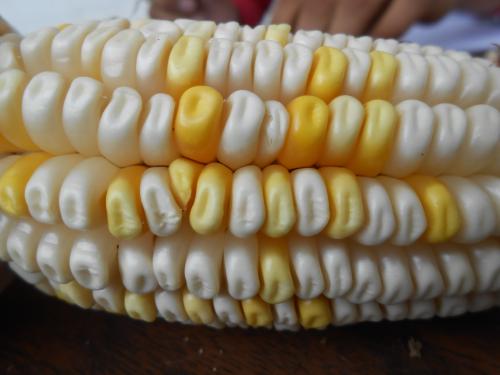
Two researchers from our UMR were interviewed to provide commentary in the press on a study about the history of maize published in Science by J. Ross-Ibarra’s team (full reference below).
A big step in the history of cultivated maize
Maize, one of the world’s most important crops, has long been a mystery to scientists regarding its origins. While it had been believed for over a century that maize was domesticated about 9,000 years ago in Mexico from teosinte subspecies parviglumis adapted to low altitudes, a new genetic study published in Science reveals that maize, as we know it, has a second wild ancestor: the highland teosinte subspecies mexicana. Between 15% and 25% of the genes in all existing maize varieties come from this teosinte mexicana, which hybridized with maize about 4,000 years after its initial domestication.
The study shows that maize evolved in two waves from Mexico, the first spreading south along the Pacific coast and the second moving back up into the Mexican highlands, where it crossed with teosinte mexicana. This new hybrid maize variety then spread rapidly, replacing or mixing with varieties from the first wave in Central and South America, and also moving northward into the southwestern United States around 4,000 years ago.
The reason for the wide distribution of this new maize variety remains a mystery, but it coincides with a period of transition to more sedentary agriculture. Researchers suggest that teosinte mexicana may have helped make maize more robust. The study underscores the importance of ancient farmers in the development of maize over millennia.
Find the comments from Alain Charcosset of the team GQMS in Le Monde and from Maud Tenaillon of the team GEVAD GEvAD in Science
Référence: Ning Yang et al., Two teosintes made modern maize.Science382,eadg8940(2023).DOI:10.1126/science.adg8940